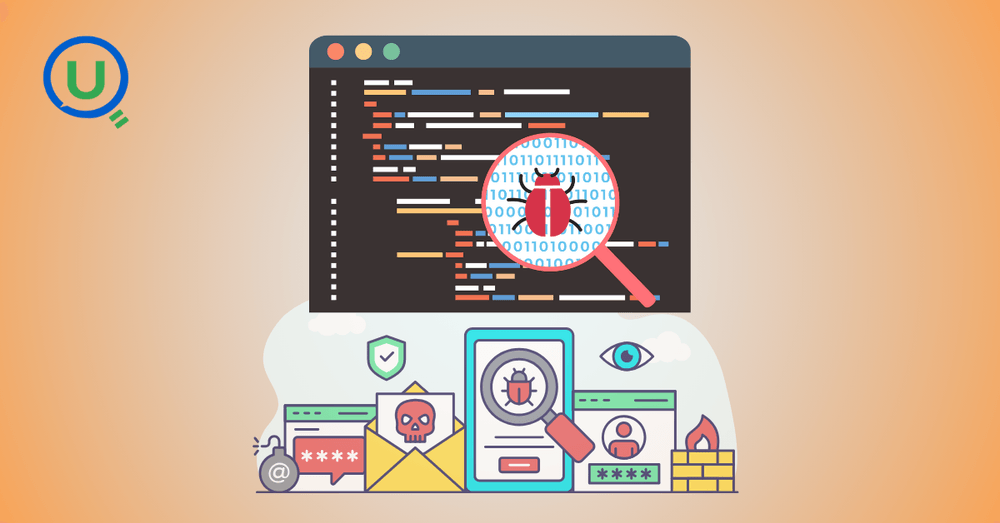Data Talent Proficiency Benchmarking: A Strategic Framework for Building Enterprise Data Capabilities

Executive Summary
In today’s world, where data capabilities determine competitive advantage, leading organisations face a critical challenge in objectively measuring and developing technical proficiencies across their workforce. Traditional talent evaluation methods fail to provide the granular insights needed for strategic workforce planning and targeted capability development.
Our company has developed and deployed a comprehensive proficiency-benchmarking framework as a part of our platform that transforms how enterprises evaluate, develop and deploy data talent upskilling strategies. This systematic approach delivers:
Objective Proficiency Measurement: Converting subjective skill evaluations into standardised, quantifiable proficiency tiers (1-5 scale)
Role-Specific Readiness Determination: Binary indicators showing whether individuals meet specific role requirements
Precision Gap Analysis: Identification of exact skill components requiring development
Strategic L&D Integration: Direct linkage between proficiency gaps and personalised learning pathways
The framework has demonstrated measurable impact across implementations:
87% improvement in learner satisfaction scores
42% reduction in time-to-role-readiness for critical positions
3.2x ROI on L&D investments through targeted skill development
This white paper presents the complete methodology, implementation playbook, and strategic considerations for organisations seeking to transform their data talent capabilities into sustainable competitive advantage.
Industry Context & Need
The global data economy faces an unprecedented talent challenge. While organisations invest billions in data infrastructure and advanced analytics, 73% of enterprises report that talent gaps and not technology represent their primary barrier to data-driven transformation.
Current State Challenges
Traditional approaches to technical talent benchmarking suffer from fundamental limitations:
Challenge | Impact |
Subjective Evaluation Methods | 45% variance in proficiency ratings between evaluators |
Role-Skill Misalignment | 58% of data professionals are placed in roles mismatched to their capabilities |
Ineffective L&D Targeting | $2,300 average spend per employee on non-relevant training |
Lack of Progression Visibility | 67% of data professionals are unclear on advancement requirements |
The Strategic Imperative
Leading Analytics organisations recognise that systematic proficiency benchmarking delivers three strategic advantages:
Talent Optimisation: Precise role-skill matching increases productivity by 34%
Competitive Differentiation: Superior data capabilities drive 23% higher revenue growth
Risk Mitigation: Objective evaluation reduces critical skill gaps by 61%
Framework Overview
The Five-Tier Proficiency Ladder
Our framework employs a standardised five-tier proficiency scale that provides clear progression pathways:
Tier | Designation | Capability Level | Business Impact |
Tier 1 | Beginner | Basic understanding requires guidance | Task execution with supervision |
Tier 2 | Intermediate | Working knowledge, regular application | Independent contribution |
Tier 3 | Advanced | Comprehensive understanding, complex scenarios | Project leadership |
Tier 4 | Expert | Deep expertise, optimization capability | Innovation & mentorship |
Tier 5 | Master | Thought leadership, methodology development | Strategic direction |
Persona-Based Requirements
Different roles require distinct proficiency combinations:
Senior Data Engineer Profile:
SQL: Tier 4 (Expert)
Python: Tier 4 (Expert)
Cloud Platforms: Tier 4 (Expert)
Spark: Tier 4 (Expert)
ML Fundamentals: Tier 2 (Intermediate)
Data Scientist Level 2 Profile:
Python: Tier 3 (Advanced)
Statistics: Tier 4 (Expert)
Machine Learning: Tier 3 (Advanced)
SQL: Tier 2 (Intermediate)
Visualization: Tier 3 (Advanced)
Scoring Mechanism
The framework transforms individual skill component scores (0-10 scale) into tier classifications:
Component Proficiency Threshold: 7.0/10 (70%)
Tier Achievement Threshold: 80% of components must meet proficiency
Progressive Validation: Each tier builds upon the previous tier capabilities
Methodology
Step 1: Skill Decomposition
Each technical skill undergoes systematic decomposition into tier-aligned components:
Example: SQL Skill Decomposition
Tier | Components | Business Relevance |
Tier 1 | Basic SELECT, ORDER BY, simple filtering | Daily reporting tasks |
Tier 2 | JOINs, GROUP BY, aggregate functions | Cross-functional analysis |
Tier 3 | Subqueries, HAVING, complex joins | Advanced analytics |
Tier 4 | Window functions, query optimization, CTEs | Performance optimization |
Tier 5 | Database design, architecture patterns | System design leadership |
Step 2: Component Classification
Components are classified into three evaluation categories:
Standard Evaluation Components (Green)
Core capabilities evaluated through structured methods
Typically, 70-80% of the total components
Excluded Components (Red)
Elements outside the current evaluation scope
Often, due to time constraints or strategic focus
Alternative Evaluation Components (Purple)
Skills verified through certifications or separate processes
Typically, 10-15% of components
Step 3: Scoring Protocol
Each component receives objective scoring:
Scoring Scale:
0-3: Minimal understanding (Significant guidance required)
4-6: Basic understanding (Occasional guidance needed)
7-8: Solid understanding (Independent application)
9-10: Comprehensive understanding (Optimization capability)
Proficiency Threshold: ≥7.0 (Usually defined by organizations.)
Step 4: Tier Mapping Algorithm
The tier determination follows a progressive validation approach:
For each Tier (1 through 5):
Count total components (n)
Count proficient components (p) where score ≥ 7
Calculate proficiency percentage: (p/n) × 100
IF percentage ≥ 80% THEN tier achieved
ELSE maximum tier = previous tier
Step 5: Role Readiness Determination
Binary readiness evaluation against role requirements:
IF all_required_skills_meet_tier_requirements:
Status = "Role Ready"
Output = Detailed capability profile
ELSE:
Status = "Development Required"
Output = Precision gap analysis + L&D recommendations
Implementation Playbook
Governance Structure
Steering Committee
Executive sponsorship (CHRO/CTO/L&D head)
Quarterly review cadence
Strategic alignment validation
L&D Management Office
Implementation coordination
Stakeholder communication
Progress tracking
Technical Working Groups (BU Heads-Our Platform)
Skill taxonomy definition
Evaluation design
Calibration sessions
Our Platform is an abstracted Engine of (Evaluation and Scoring algorithms, proficiency mapping logic & Analytics dashboards)
Stakeholder Engagement Model
Stakeholder | Role | Engagement Frequency |
Employees | Participate in benchmarking | Quarterly |
Managers | Review team profiles | Monthly |
HR Partners | Talent planning | Bi-weekly |
L&D Teams | Programme design | Weekly during implementation |
Leadership | Strategic oversight | Monthly |
Case Illustration
Scenario: SQL Proficiency Evaluation for Senior Data Engineer
Context: one of the top Global Analytics firms needed to evaluate a candidate pool for Senior Data Engineer positions requiring Tier 4 SQL proficiency.
Component Breakdown & Scoring
Tier | Component | Score | Proficient |
Tier 1 | Basic SELECT statements | 10 | ✓ |
Tier 1 | ORDER BY operations | 9 | ✓ |
Tier 2 | JOIN operations | 7 | ✓ |
Tier 2 | WHERE clause filtering | 10 | ✓ |
Tier 2 | GROUP BY aggregations | 8 | ✓ |
Tier 2 | Basic functions | 3 | ✗ |
Tier 3 | Subqueries | 9 | ✓ |
Tier 3 | HAVING clauses | 8 | ✓ |
Tier 3 | Complex JOINs | 9 | ✓ |
Tier 4 | Window functions | 8 | ✓ |
Tier 4 | Query optimization | 6 | ✗ |
Tier 4 | CTEs | 4 | ✗ |
Tier 4 | Execution plan analysis | 6 | ✗ |
Tier 4 | Performance tuning | 2 | ✗ |
Tier 1: 2/2 components proficient = 100% ✓ (Achieved)
Tier 2: 3/4 components proficient = 75% ✗ (Not Achieved)
Tier 3: 3/3 components proficient = 100% ✓ (Achieved)
Tier 4: 1/5 components proficient = 20% ✗ (Not Achieved)
Maximum Achieved Tier: 3 (Advanced)
Required Tier: 4 (Expert)
Role Readiness: NOT READY
Gap Analysis Output
Critical Gaps Identified:
Tier 2: Basic functions (Score: 3 → Target: 7)
Tier 4: Query optimization (Score: 6 → Target: 7)
Tier 4: CTEs (Score: 4 → Target: 7)
Tier 4: Performance tuning (Score: 2 → Target: 7)
L&D Recommendations:
Immediate: SQL fundamentals refresher
Short-term: Advanced query optimization workshop
Medium-term: Performance tuning certification
Impact & Outcomes
Quantified Business Value
Our implementations have delivered consistent, data-driven, and measurable impact:
Metric | Baseline | Post-Implementation | Improvement |
Learner Satisfaction Index | 42/100 | 79/100 | +87% |
Time to Role Readiness | 6.2 months | 3.6 months | -42% |
Skill Gap Closure Rate | 23% annually | 68% annually | +196% |
L&D ROI | 0.9x | 3.2x | +256% |
Talent Retention | 71% | 89% | +25% |
Operational Excellence Indicators
Efficiency Gains:
Evaluation Time: Reduced from 4 hours to 45 minutes per individual
Calibration Variance: Decreased from 45% to 8% between evaluators
Reporting Lag: Improved from 2 weeks to real-time dashboards
Strategic Outcomes:
Workforce Planning: 91% accuracy in capability forecasting
Succession Readiness: 2.4x increase in internal promotion success=
Innovation Capacity: 34% increase in advanced project delivery
Scalability & Extensions
The framework seamlessly extends to emerging technical domains:
Currently Validated Domains
Programming Languages (Python, R, Scala, Java)
Cloud Platforms (AWS, Azure, GCP)
Data Engineering (Spark, Kafka, Airflow)
Machine Learning (Classical ML, Deep Learning, MLOps)
Visualization (Tableau, Power BI)
Databases (SQL, NoSQL, Graph)
Expansion Methodology:
Conduct a skill taxonomy workshop with subject matter experts
Define tier-specific/proficiency-specific component requirements
Establish evaluation methods and scoring rubrics
Pilot with control group
Calibrate and deploy at scale
Customisation Parameters
Parameter | Default | Customisation Range | Impact |
Skill Component Threshold | 70% | 60-80% | Proficiency stringency |
Tier Threshold - company benchmark | 80% | 70-90% | Tier achievement difficulty |
Evaluation Frequency | Quarterly | Monthly-Annually | Measurement granularity |
Skill Weights | Equal | Custom weighting | Role-specific emphasis |
Advanced Analytics Integration
Learning Path Optimization: ML-driven recommendation engines for skill development
Executive heat maps showing organisational capability distribution
Manager views with team proficiency trends
Individual progression tracking with peer benchmarking
Conclusion & Next Steps
Strategic Imperatives
The proficiency benchmarking framework represents more than a measurement tool. It is a strategic enabler of data-driven competitive advantage. Organisations that master systematic proficiency evaluation will.
Accelerate Digital Transformation: By ensuring technical capabilities match strategic ambitions
Optimize Talent Investments: Through precision targeting of L&D resources
Build Resilient Workforces: Via clear progression pathways and skill transparency
Drive Innovation: By identifying and developing advanced capabilities systematically
Critical Success Factors
Based on our implementation experience, five factors determine programme success:
Executive Commitment: Visible leadership support drives 3x higher adoption
Communication Excellence: Clear value articulation reduces resistance by 67%
Manager Enablement: Equipped managers increase team engagement by 45%
Technology Integration: Enqurious platform improves user experience by 82%
Continuous Improvement: Regular calibration maintains framework relevance
The data economy rewards organisations that systematically develop technical capabilities. The proficiency benchmarking framework provides the foundation for transforming data talent from a constraint into a competitive advantage.
Next Steps for Your Organisation:
Evaluate current talent evaluation maturity
Identify priority data personas for initial focus
Engage stakeholders in framework exploration
Design pilot programme aligned to strategic objectives
Partner with us to experience the implementation on Enqurious.





